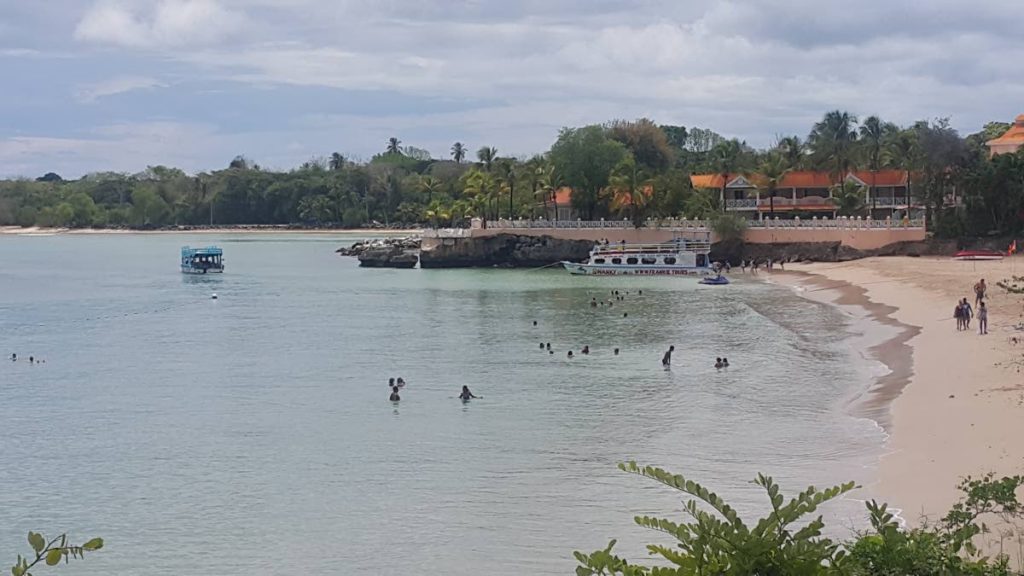Protect yourself at the beach this rainy season!

by Sheldon Ramoutar
The rainy season is upon us and if you are thinking of heading to the beach here is some information that will help you decide the best time and safest place to bathe along the stretch of our beaches regarding biological pollutants. Numerous persons visit beaches around Trinidad and Tobago in any given week with highest numbers during the school vacation (July –August). The rainy season occurs between mid-May to mid-December with Petit Carême occurring between mid-September to mid-October. In the rainy season, the mornings are usually sunny followed by afternoon showers and fair nights. This increase in rainfall during this period leads to an increase in land runoffs into watercourses, rivers and beaches. As water flows over surfaces, it picks up a variety of pollutants including oil, bacteria, nutrients, grease, pesticides and heavy metals. This article will focus only on bacterial pollutants with respect to human health. The bacteria relevant to human health is faecal bacteria and if found in runoffs may be from animals such as dogs, cats, farms and/or wild animals and sewage from untreated human waste. Eventually, the polluted water reaches surface water, and, if near a swimming beach, can result in elevated concentrations within and after a rainfall event depending on the topography of the beach.
What bacteria can be present?
Most bacteria present in our environment and within us are actually not disease causing but even beneficial and essential. Very few bacteria are disease causing and the World Health Organisation (WHO) together with the United States Environment Protection Agency (USEPA) developed guidelines concerning recreational use of the water environment to monitor and assess their effective management. Coliform bacteria represents a large group of many types of bacteria that occur throughout the environment and also in waste from humans and animals. Most types of coliform bacteria are harmless to humans, but some can cause mild illnesses and a few can lead to waterborne diseases including ear and eye ailments and particularly gastroenteritis. Coliform bacteria are often referred to as "indicator organisms" because they indicate the potential presence of disease-causing bacteria in water. The presence of coliform bacteria in water does not, however, necessarily lead to an illness but rather their presence indicates a level of contamination. Persons who are immunocompromised- infants or elderly- may be most at risk of getting an infection. Bacteriological water quality studies conducted by the Institute of Marine Affairs (IMA) since 1981 revealed high levels of bacteria after rainfall events, some above the WHO and USEPA established acceptable limits. It is very expensive and hence impractical to test for all pathogens therefore specific indicator organisms are used. Three specific indicators established by WHO to test water quality are faecal coliform, escherichia coli and enterococci. These 3 indicators are common and natural inhabitants of the intestinal tract of warm-blooded animals, including humans therefore their presence is believed to indicate sewage contamination. In marine water, the guideline value is set a geometric mean of 35 CFU (colony forming units) for enterococci, 126 CFU for E. coli and 200 CFU for faecal coliforms in 100 mL of water.
How do we identify these bacteria?
The faecal bacterial concentrations cannot be determined by appearance of the water but by various laboratory tests using culture-based methods such as membrane filtration and most probable number techniques which tests the presence of these microorganism in a given volume of water. These methods can take between 24 to 48 hours for results to be obtained, new techniques are being explored to reduce the waiting time using molecular methods including quantitative polymerase chain reaction (qPCR) and define substrate technology (Colilert). Based on the results obtained from previous studies we recommend the following guidelines and precautions for bathing at a beach during the rainy season.
Guidelines and Precautions
Avoid bathing near to or in rivers near shorelines permanently as they carry pollutants from inland throughout the year with or without rainfall.
Choose an area of the beach which experiences little or no runoffs during heavy showers. The whole beach will not be affected or be polluted by heavy runoffs but areas close to drains, small watercourses and visible water runoffs from roads etc.
WHO estimates the T90 (90 % die-off rate) for total coliform is approximately 2.2 hours to 48 hours for marine waters taking in account dispersion and dilution. Similar times were reported for e.coli and enterococci. It is suggested to not enter beaches with heavy runoffs after rainfall events. The time will increase however dependent on the length, frequency and intensity of the rainfall event.
Other precautions for bathers are to avoid swimming with open cuts and wounds as this creates a direct entrance for bacteria into the body, wash hands before handling food and shower after swimming.
For further information, you can visit the Ministry of Planning and Development’s website for the State of Marine Environment Report of Trinidad and Tobago 2016 ( Publication section) produced by the IMA, which highlights beaches within the bathing beach acceptable limits set by the WHO.


Comments
"Protect yourself at the beach this rainy season!"